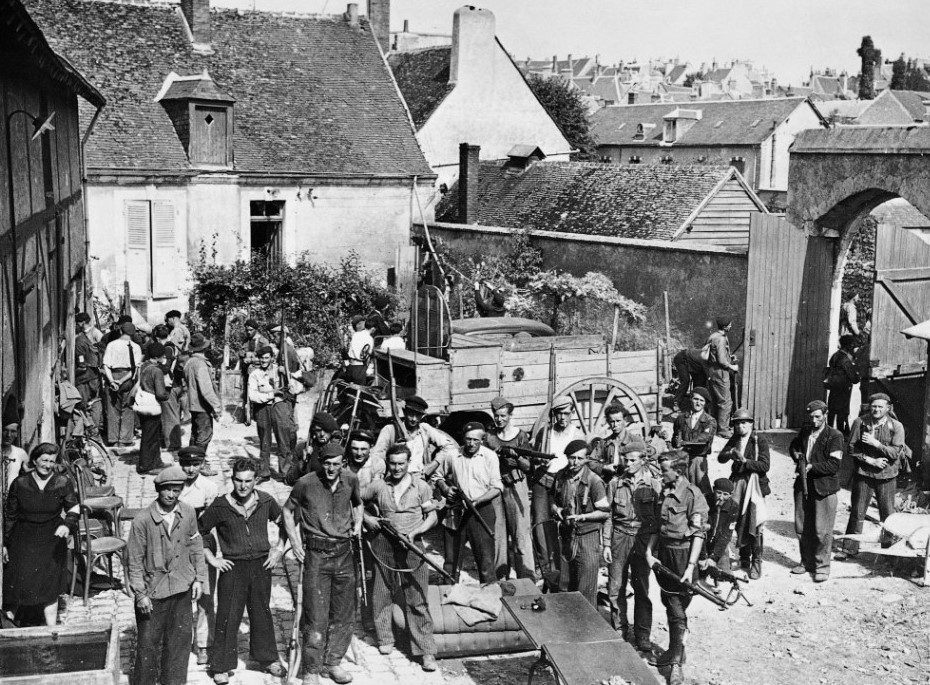SOE (Special Operations Executive)
A Short History
The Special Operations Executive (SOE) was a secret British organisation created during the Second World War to encourage resistance and carry out sabotage in enemy territory.It was formed in July 1940 by the amalgamation of three existing organisations.
One of these was Section D, part of the Secret Intelligence Service (SIS, also known as MI6). Set up under Major Laurence Grand of the Royal Engineers, Section D had been planning clandestine sabotage and propaganda operations to undermine the German economy since 1938.
The second of SOE’s forebears was Military Intelligence (Research), a ‘think-tank’ in the War Office tasked with studying and planning irregular warfare projects. In charge of MI(R) was another Royal Engineer, Major J.C.F Holland. The third organisation was Electra House, a secret propaganda operation of the Foreign Office, created after the Munich crisis.
Britain’s new Prime Minister, Winston Churchill, was enthusiastic about the concept and, at the outset, placed Hugh Dalton, the dynamic socialist Minister of Economic Warfare, in charge of SOE. According to Dalton, Churchill commanded him to ‘set Europe ablaze!’ This stirring quotation has come to be seen as Churchill’s founding command to SOE. The less dramatic but official definition of SOE’s role was ‘to coordinate all action, by way of subversion and sabotage, against the enemy overseas’. By the end of the war, SOE’s role was global (though naturally its early and principal thrusts were in the Axis-occupied territories of Europe and the Middle and Far East).
Under Dalton, SOE’s first chief was Sir Frank Nelson, a former Conservative MP who had worked earlier for SIS in Switzerland. Other senior staff included a nucleus of former MI(R) and Section D officers and new recruits from industrial, commercial and city firms with experience of international business. Nelson appointed, for example, Charles Hambro, a banker with strong Scandinavian connections, as his deputy. In time, staff-trained officers from the various armed services were also brought on board. Nelson’s director of operations and training was Brigadier (later Major-General Sir) Colin Gubbins, a multi-lingual officer who had worked for MI(R) and written the army manuals on guerrilla warfare; Gubbins had also trained and commanded the Independent Companies (predecessors of the Commandos) in the Norwegian campaign.
In 1942, Sir Charles Hambro, who had been knighted for his contribution to SOE’s Scandinavian operations, replaced Sir Frank Nelson as SOE’s chief. In 1943, Gubbins replaced Hambro and remained SOE’s chief until the end of the war. Lord Selborne replaced Hugh Dalton as Minister of Economic Warfare in 1942.
SOE’s principal headquarters was at 64 Baker Street in London; as the war progressed, it took over many more buildings in surrounding streets. Training and holding schools were also established for the preparation of candidates recruited as prospective agents. In Britain, many of these schools were requisitioned country estates and houses: paramilitary training took place in the Scottish highlands, for example, and parachuting was taught at Ringway, now Manchester airport, while SOE’s famous ‘finishing school’ for agents occupied several houses on the Beaulieu estate in Hampshire.
Other premises acted as the wireless stations by which SOE kept in contact by radio with its agents in enemy territory. There were also research establishments devoted to developing new equipment, methods, and devices for sabotage and clandestine warfare, from silenced pistols to time-delay detonators.
Additional headquarters and training schools were also established overseas. Operations into the Balkans, for example, were chiefly planned and directed from the Middle East and, later, Italy. India and Ceylon were the main bases for operations into Burma and Malaya. Many operations into Borneo and other Japanese-occupied territory were planned and launched from Australia.
Many SOE operations were aimed at undermining enemy military, economic and industrial strength by targeting raw materials, industry,communications, and supply lines. Among its most famous exploits was the successful sabotage in 1943 of the Norsk Hydro ‘heavy water’ plant at Vemork in Norway by a team of Norwegian SOE agents; the operation was aimed at disrupting German attempts to develop an atomic bomb.
SOE also played an important role in supporting and coordinating local resistance groups with the aim of diverting enemy attention from the major fighting fronts. In France, for example, the German Das Reich Division, ordered to reinforce the German forces in Normandy after D-Day, was delayed in its journey from the Toulouse area for a critical seventeen days by SOE-backed ambushes and sabotage. Altogether, SOE put 10,000 tons of warlike stores into France alone: 4,000 of them before and 6,000 after D-Day; by 6 June it also had some fifty wireless links to French resistance movements.
Arguably one of SOE’s most important contributions was its ability to encourage and fuel a spirit of resistance among Axis-dominated populations, which remains, in many corners of the world, a source of enduring national pride and inspiration.
SOE was wound up in 1946. No firm figure survives as to its total strength, but its peak strength, reached in 1944, may have been in the region of some 10,000 personnel, of whom half were agents. This figure does not include the many locally recruited ‘foot-soldiers’ with whom its agents worked throughout the world.
Text courtesy of The Gerry Holdsworth Special Forces Charitable Trust: http://holdsworthtrust.org/soe
Images courtesy of The Richardson Collection, IWM, Bigstock, Shutterstock & Dreamstime
